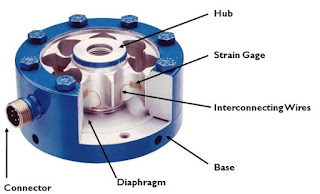What is a Load Cell?
Load cell is a device that converts force in to an electrical signal.A load sensor is a sensor or a transducer that converts a load or force acting on it into an electronic signal.This electronic signal can be a voltage change,current change or frequency change depending on the type of load cell and circuitry used.
Load cells or Load sensors as they are commonly commonly called can be made using resistive,capacitive,inductive or other techniques.Most commonly available load cells are based on the principle of change of resistance in response to an applied load.
Load cell is designed to measure tension,compression or both.
No moving parts are present in load cells.Because of that no wear and tear between main components.
Types of Load Cells
S-Type
Button
Canister
Shear
Beam
Working of Load Cells
Load cells work on the principle of Wheatstone bridge.Usually at least four strain gauge are configured in a Wheatstone bridge configuration with four separate resistor connected as shown below in what is called Wheatstone bridge .
How Wheatstone bridge work?
An excitation voltage usually 10v is applied to one set of corners and the voltage difference is measured between the other two corners.At equilibrium with no applied load,the voltage output is zero or very close to zero when the four resistor are closely matched in value.
Components of Load cell
Connector
Hub
Strain Gauge
Interconnecting Wires
Base
Diaphragm
What is Strain Gauge ?








